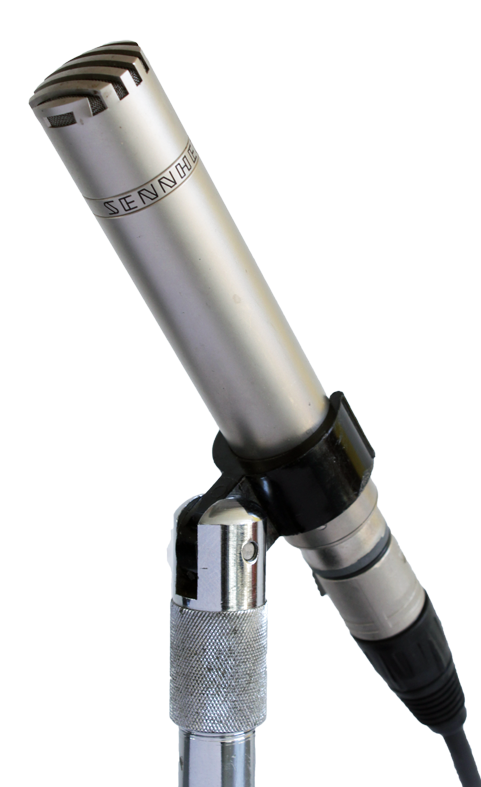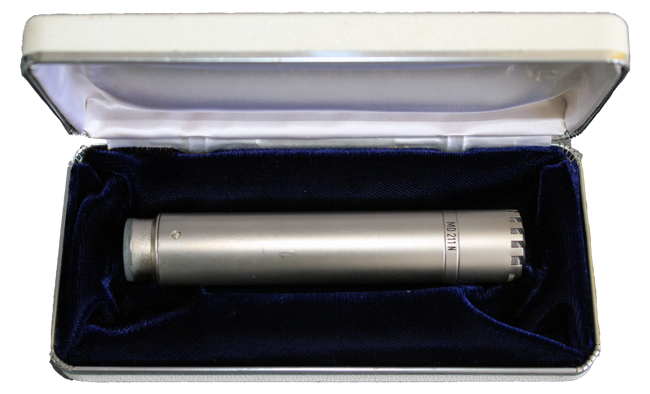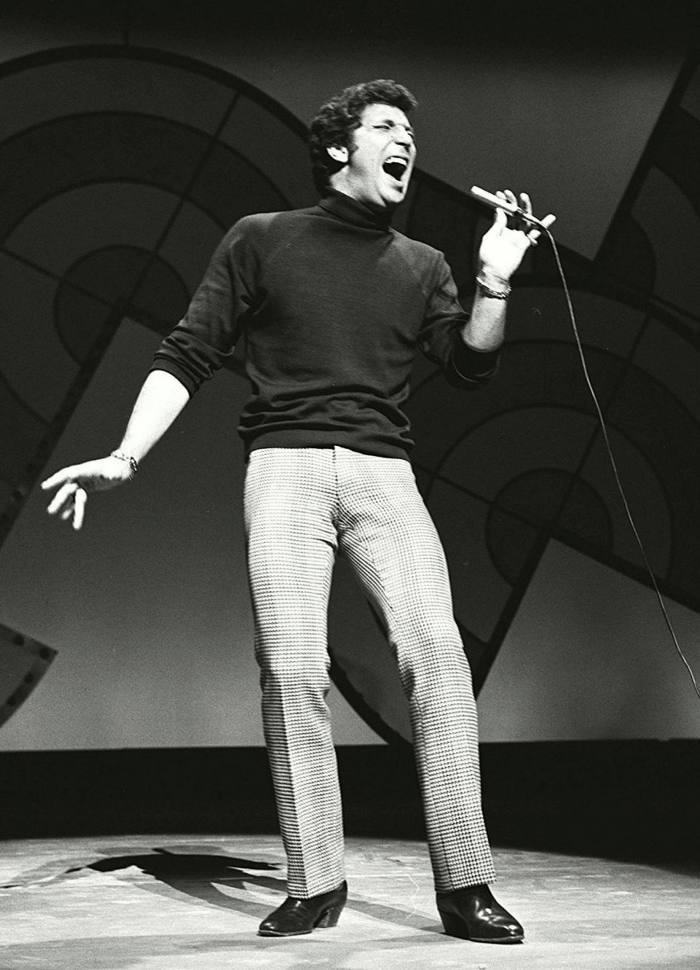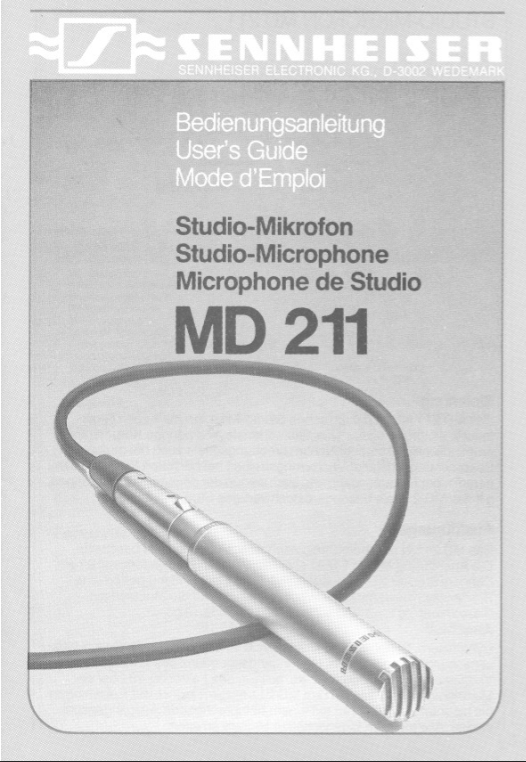|
The slim Sennheiser MD 211, from 1962, is a dynamic omnidirectional microphone, with great qualities.
Nowadays, sound engineers usually turn to directional microphones, which are used close to the sound source, the so-called 'close miking'. This way, the resulting sound is recorded isolated from other sound sources, but what is lost is the influence that the space exerts on the sound.
Many instruments, on the other hand, only sound natural if the reflections of their sound are also registered, such as string instruments, wind instruments and organs, but also vocalists who sing at a considerable volume.
In 1962, Sennheiser developed a slim studio version of their successful MD 21 omni especially for these instruments. The result was the slim MD 211, a miniaturized version, with a weight of only 125 grams, a length of 12 cm and a diameter of 2.2 cm (MD 21: 280 g, 13 x 4.6 x 4.6 cm).
The frequency range was also extended: 30-20,000 Hz (MD 21: 40-18,000 Hz). It was very insensitive to handling noise and plosives, thus ideal for use as a handheld vocal microphone. At the time this was Sennheisers best omni for classical music, their condensers would follow in 1964.
It was somewhat less robust than the practically indestructible MD 21, the capsule of the MD 211 was placed far forward, which made it vulnerable; if it fell head down, the element could break or reproduce low frequencies less well.
The microphone was well suited for both studio and outdoor recordings and, just like the MD 21, the MD 211 was also perfectly usable as a reporting microphone.
Remarkably, the MD 211's first significant appearance was somewhere else entirely: underground, at a collapsed mine, in Lengede, in Lower Saxony, West Germany. After a number of miners were located at a depth of 42 meters, an MD 211 was lowered through a narrow borehole of 58mm, to be used as both a microphone and a loudspeaker, allowing the rescue team to communicate with the trapped miners. After fourteen days they could finally be rescued: it became known as 'the Miracle of Lengede.'
In the sixties omni's were still widely used as vocal microphones at live concerts; at the time, monitoring was done from a greater distance, so that feedback occurred less quickly than today, where singers sing close to the, usually loud, monitors.
The small size of the MD 211 allowed all attention to be focused on the vocalist.
The most famous user was Tom Jones, who did a series of television shows with it in 1969, after which the MD 211 was nicknamed the 'Tom Jones microphone'.
The BBC telivision also used the microphone a lot for pop playback recordings, because it was so unobtrusive due to its small size and singers certainly didn't get tired holding it.
The production lasted until about 1988, more than a quarter of a century, but today the microphones are still appreciated and used in the studio, also for acoustic guitars and piano recordings.
These and many more types feature in my book Witnesses of Words. More information about that can be found at www.witnessesofwords.com

|
|
|
|
|
Top: the elegant MD 211 and the MD 211 in its original box
Below: sound, Tom Jones with the MD 211 and the manual
|
|
|
|
|
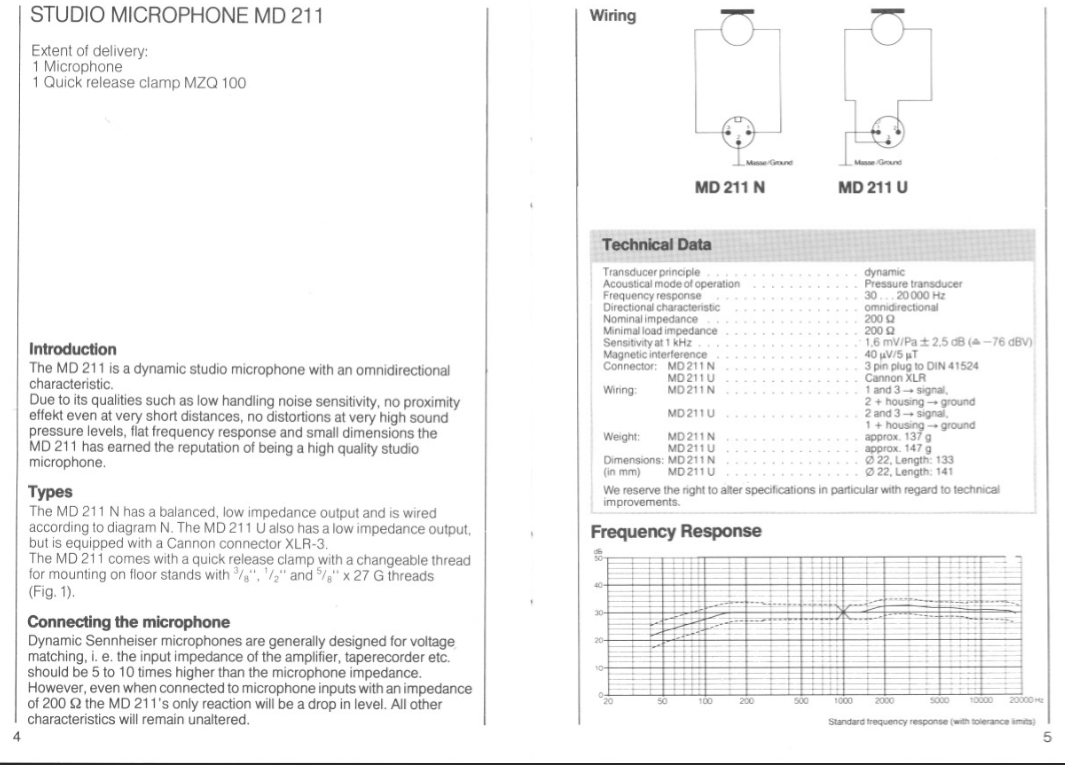 |
|
|


 Video's
Video's Contact
Contact


